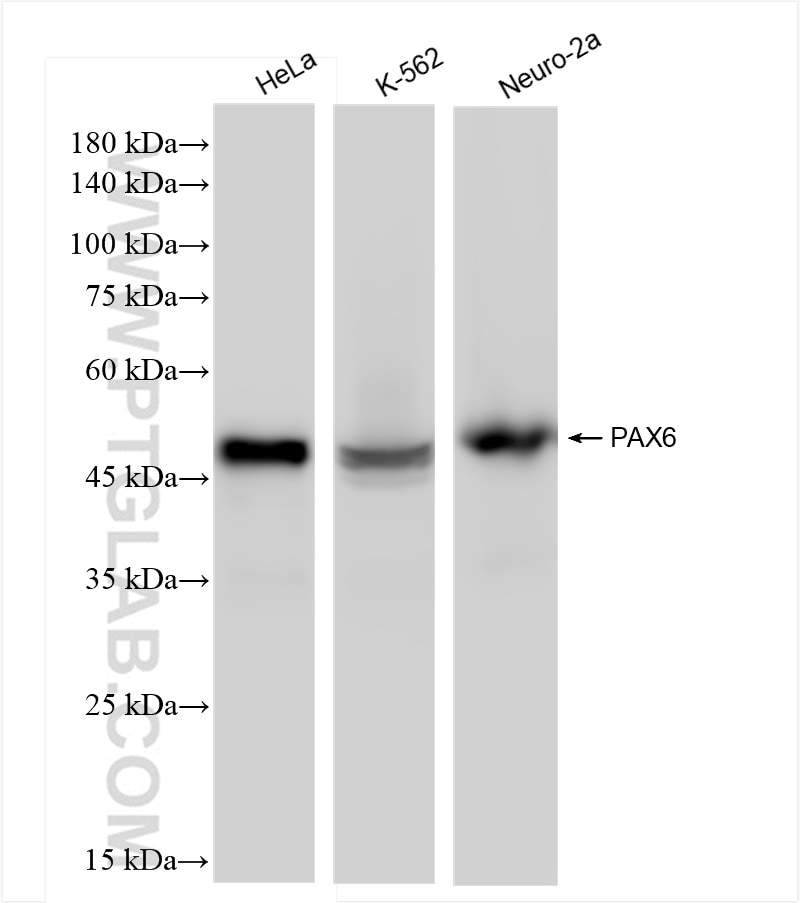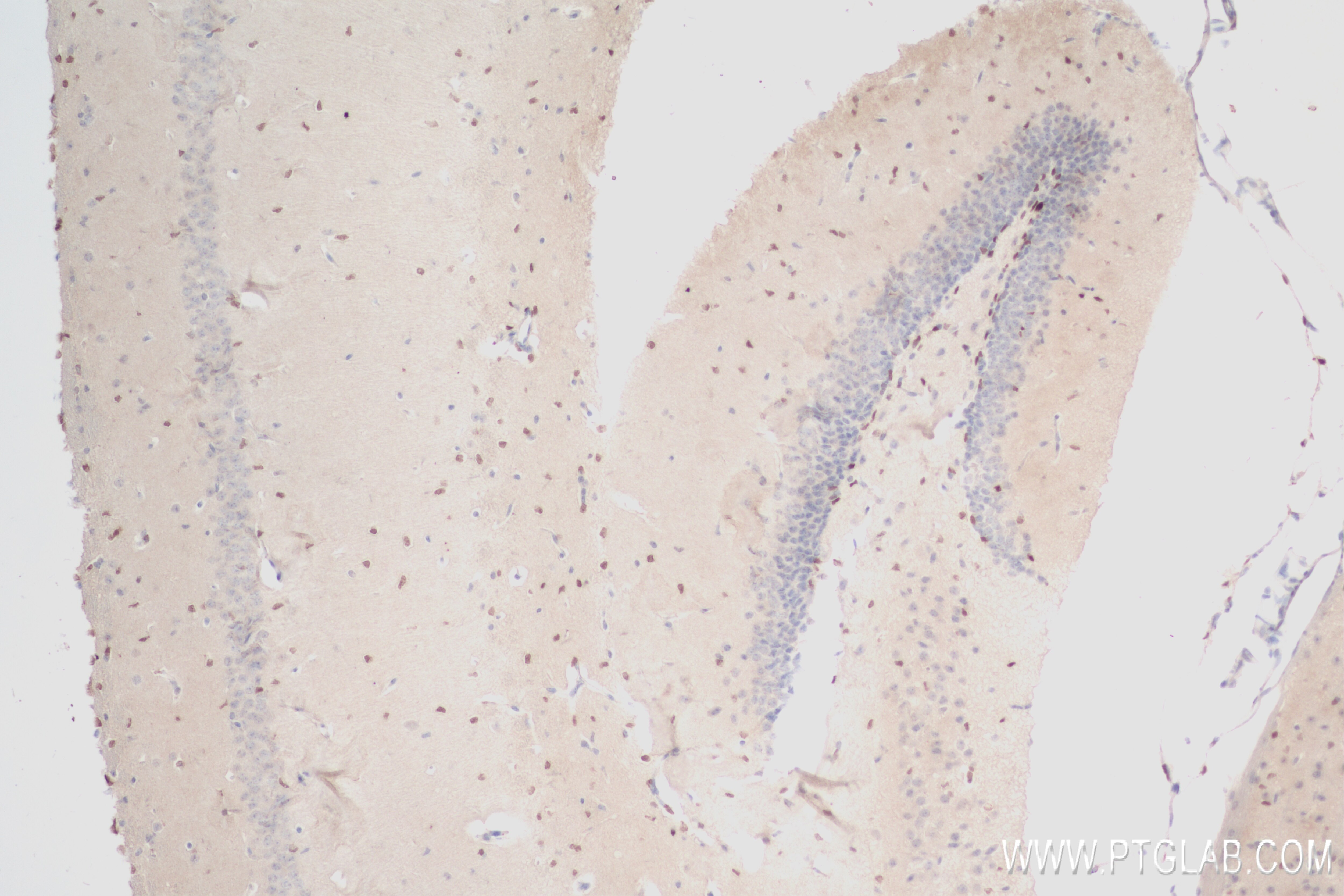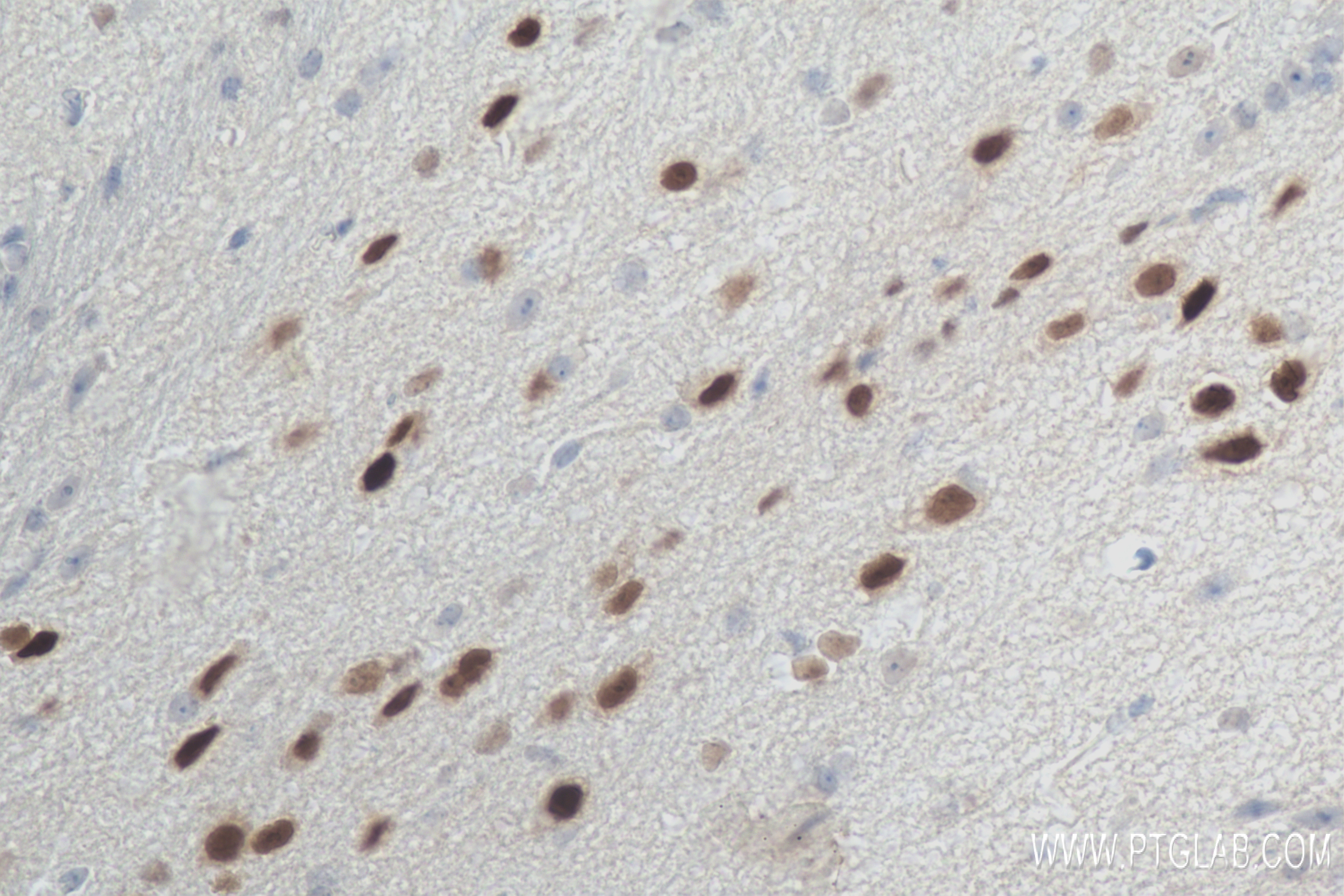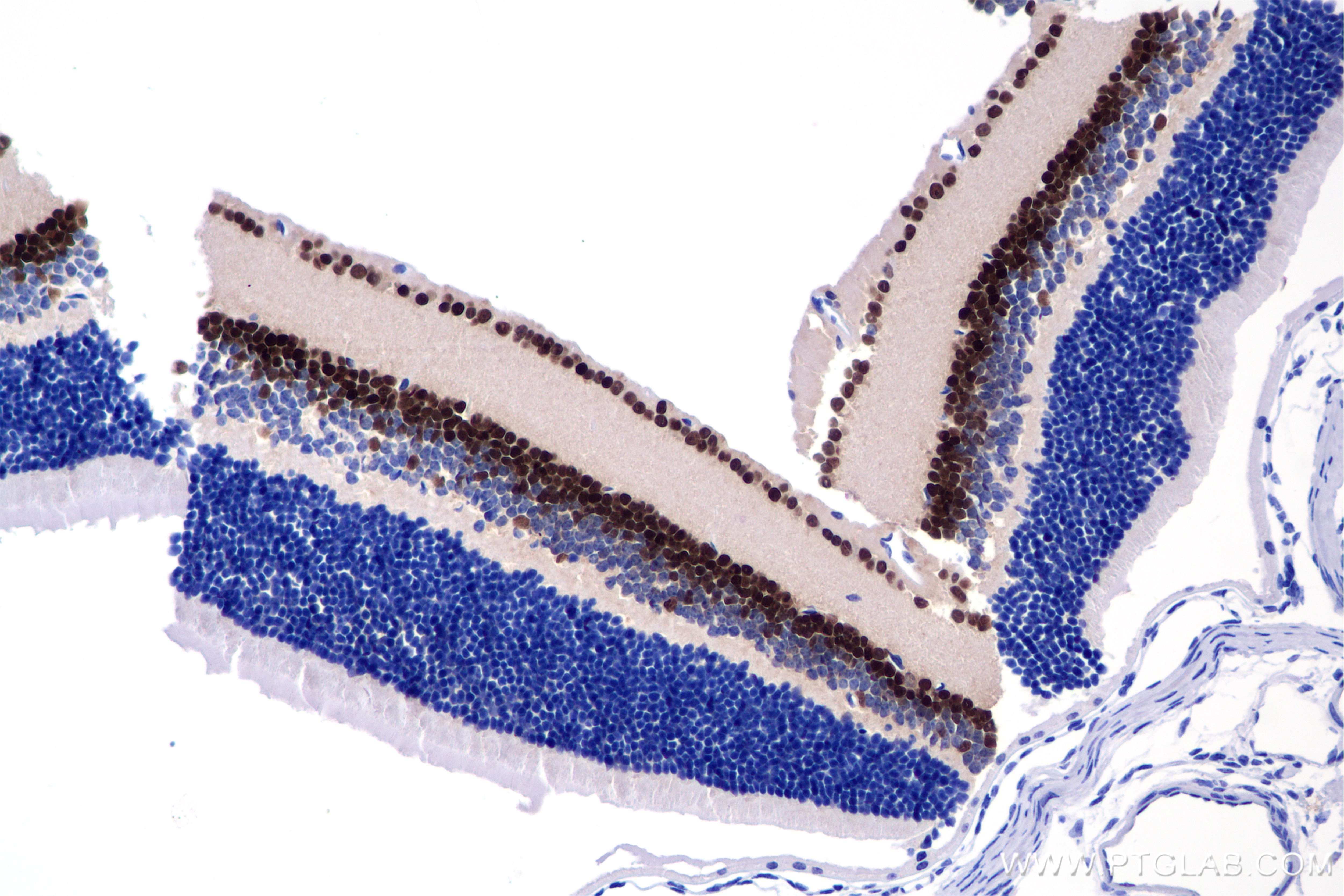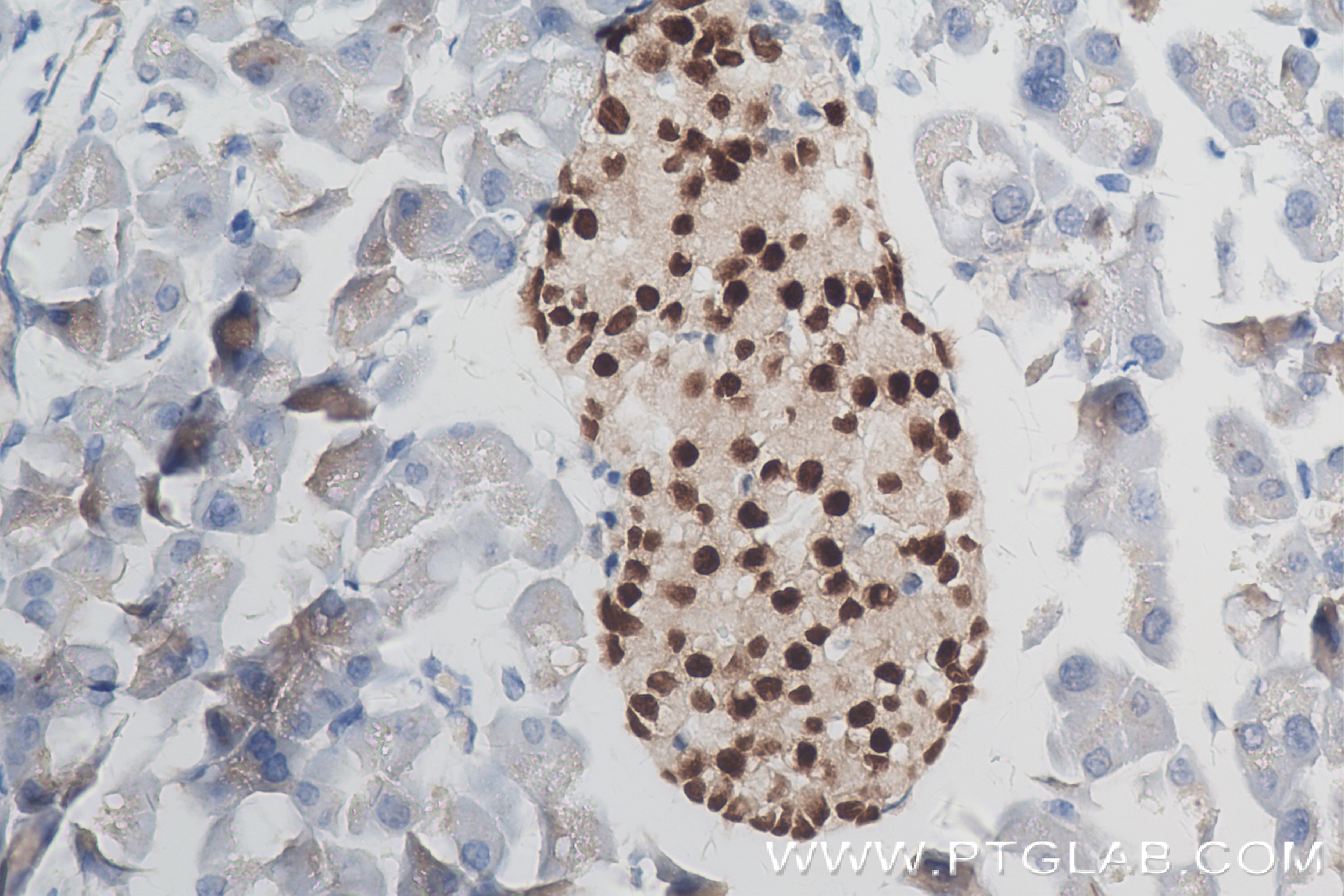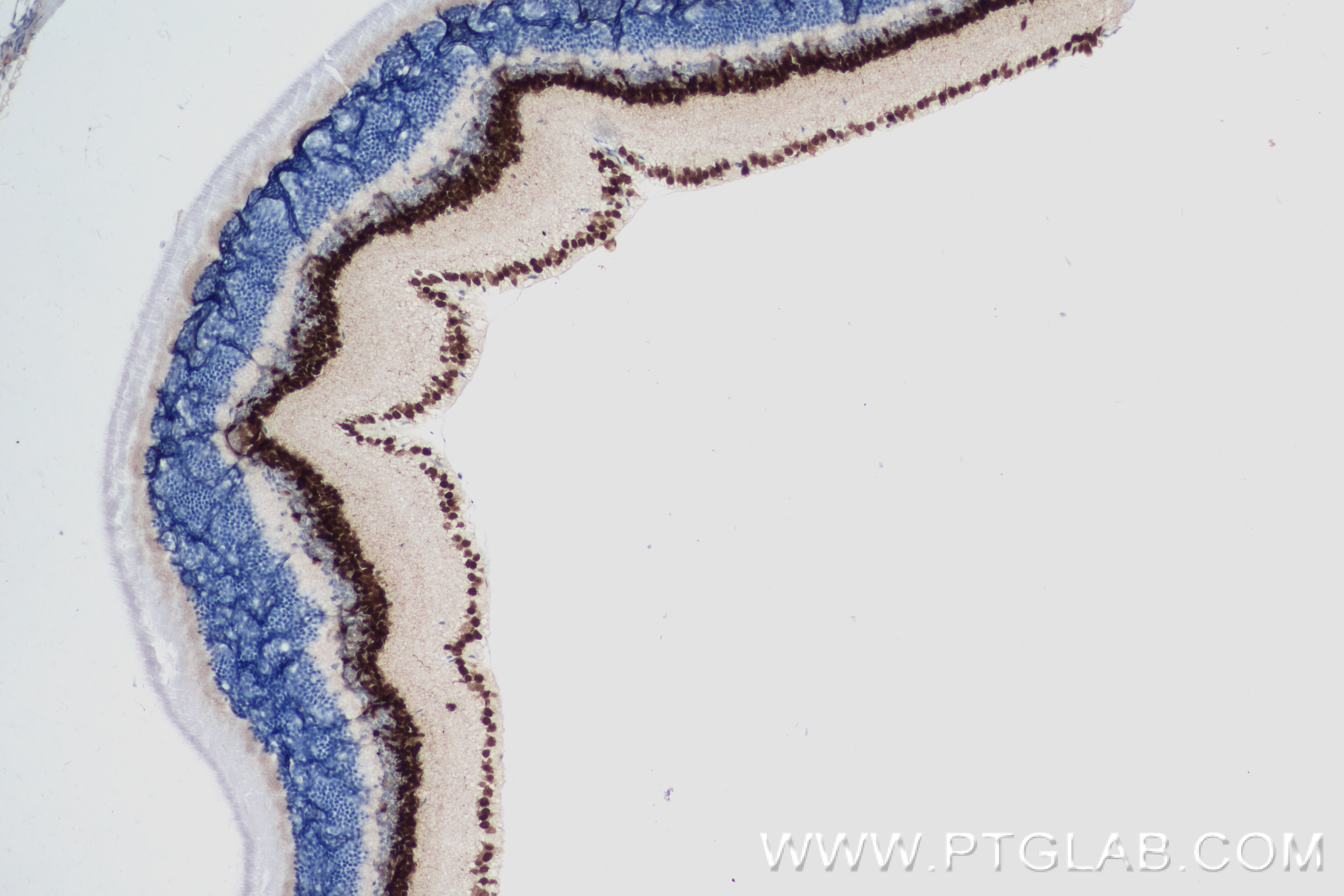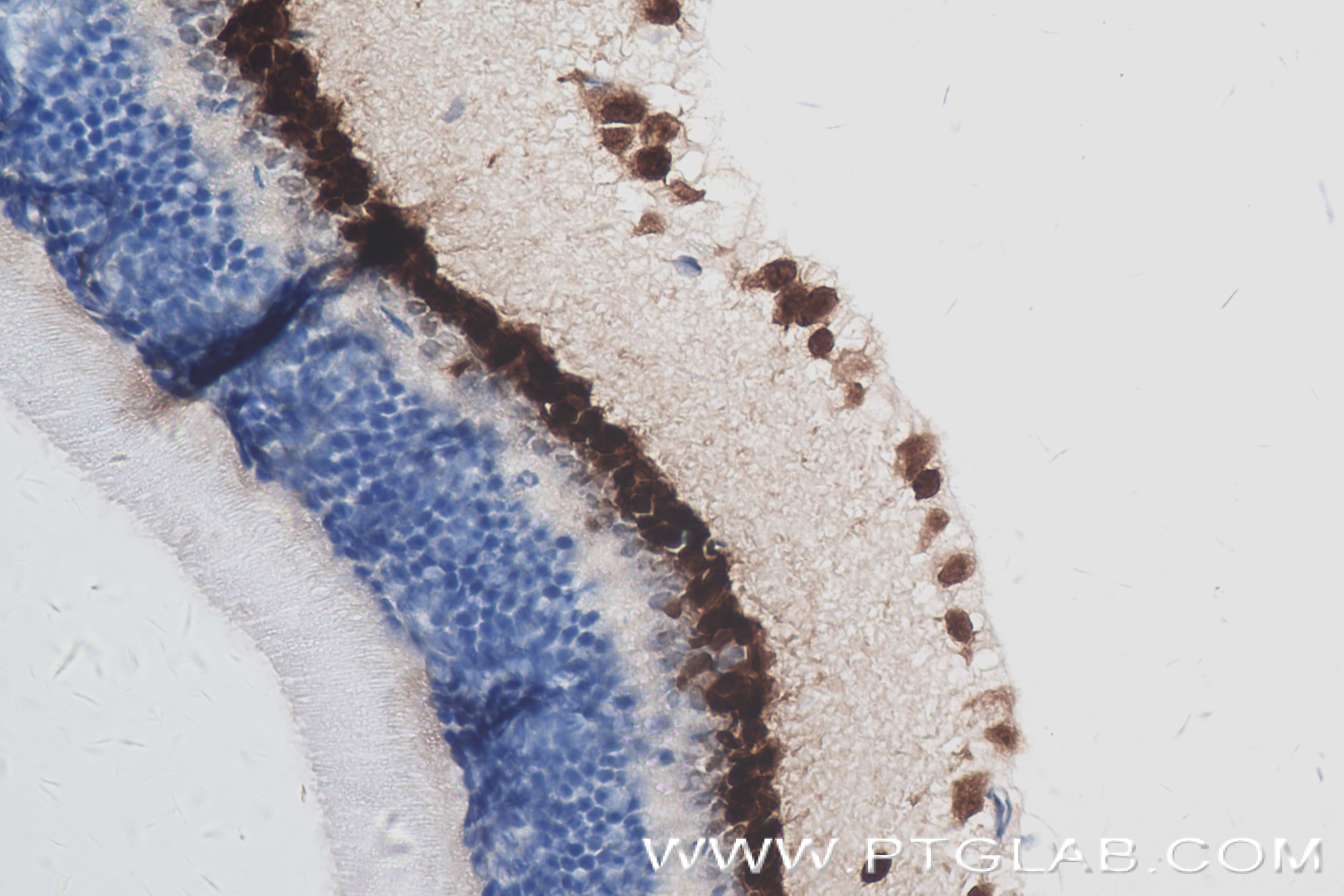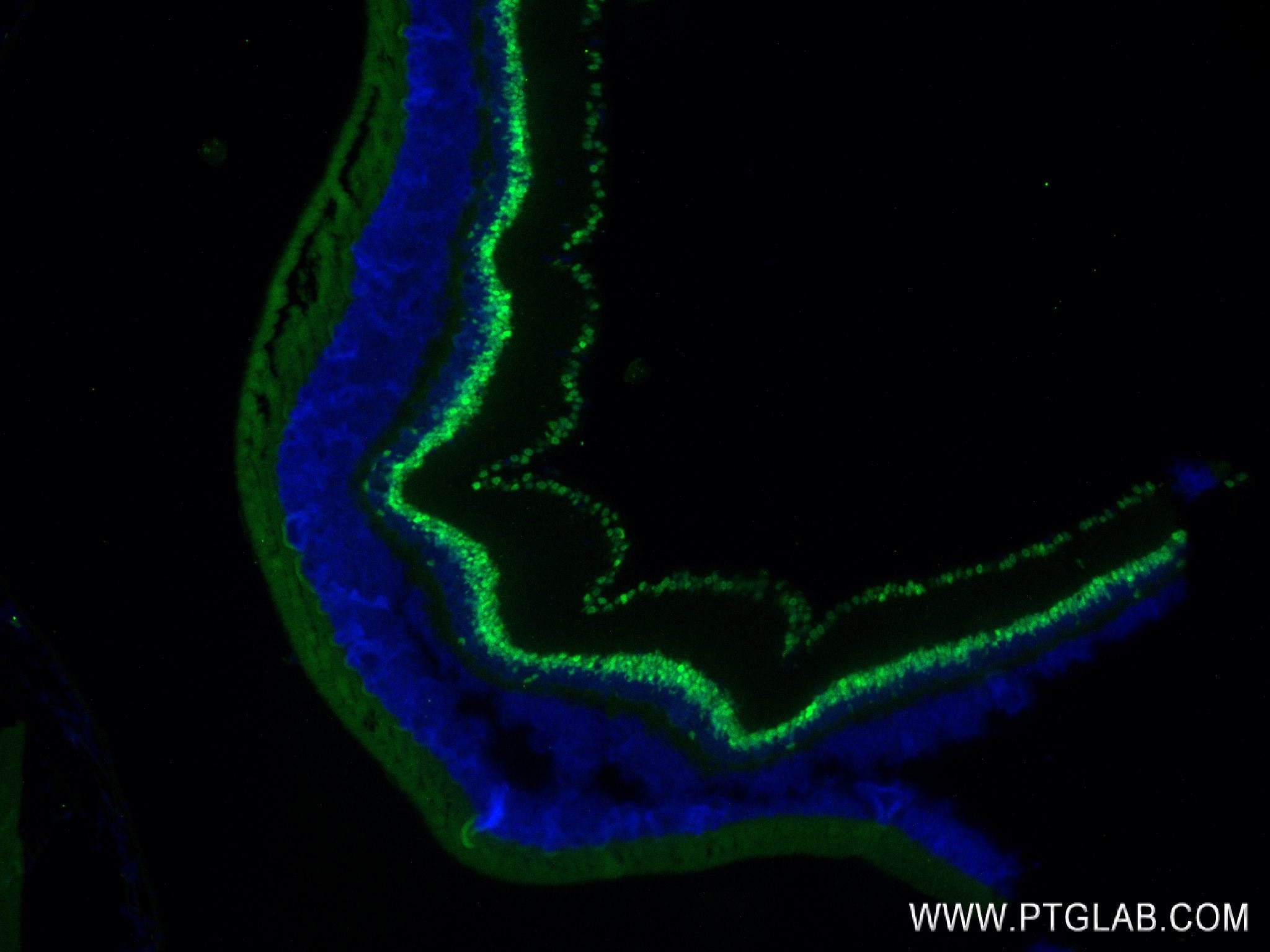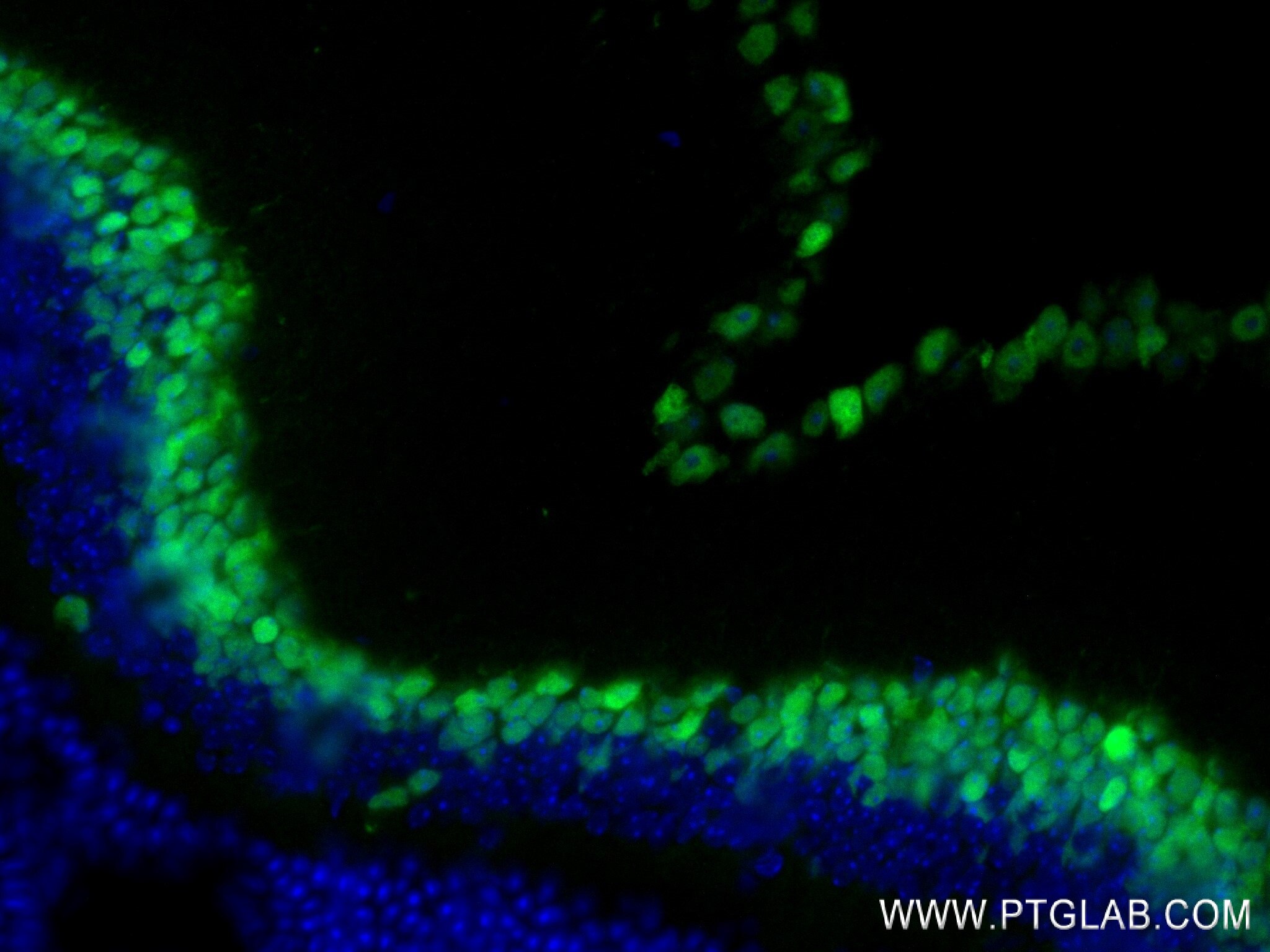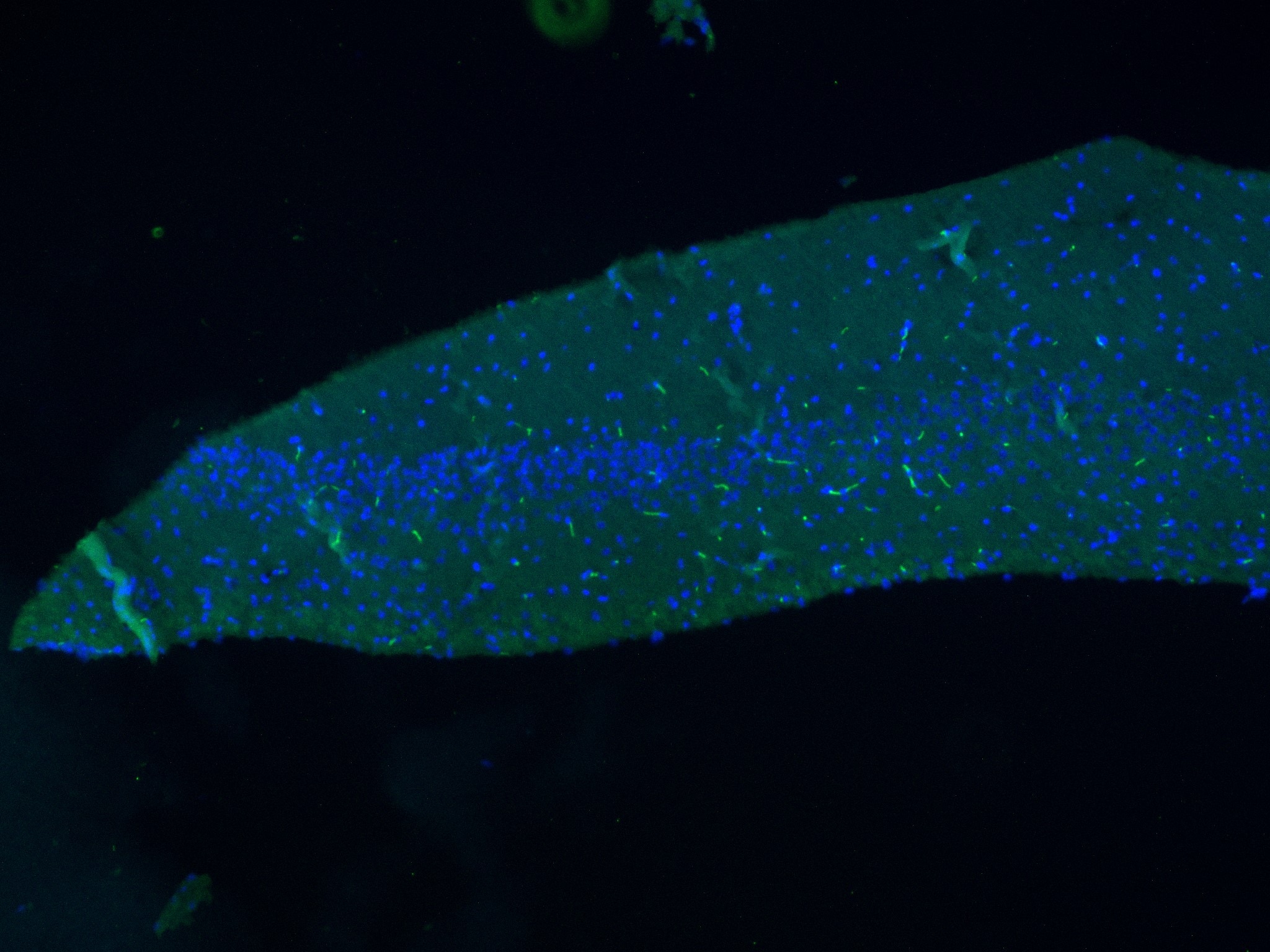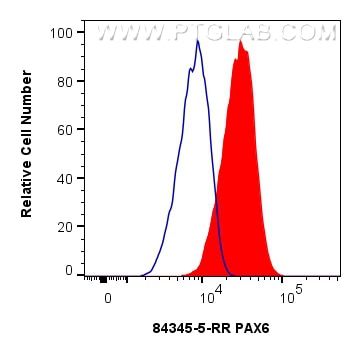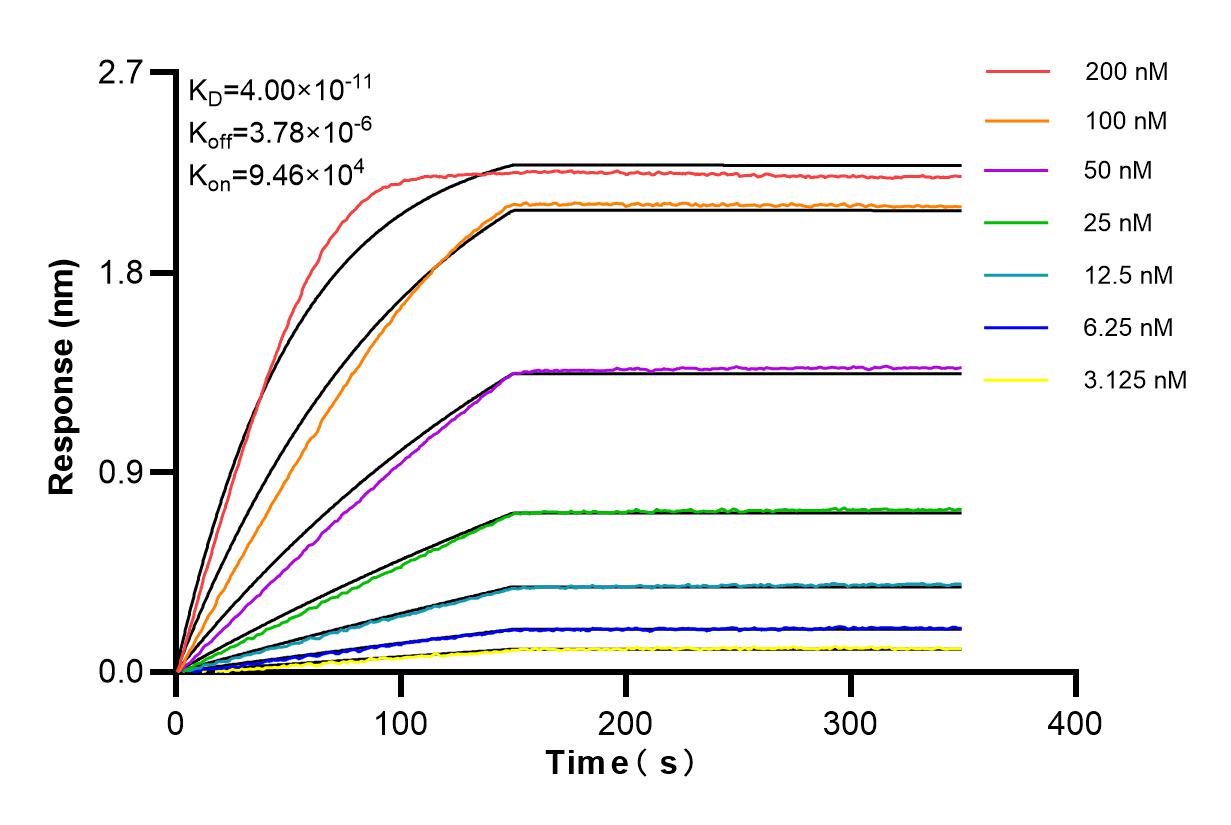Tested Applications
| Positive WB detected in | HeLa cells, K-562 cells, Neuro-2a cells |
| Positive IHC detected in | mouse brain tissue, mouse eye tissue, mouse pancreas tissue Note: suggested antigen retrieval with TE buffer pH 9.0; (*) Alternatively, antigen retrieval may be performed with citrate buffer pH 6.0 |
| Positive IF-P detected in | mouse eye tissue |
| Positive FC (Intra) detected in | U-251 cells |
Recommended dilution
| Application | Dilution |
|---|---|
| Western Blot (WB) | WB : 1:2000-1:16000 |
| Immunohistochemistry (IHC) | IHC : 1:500-1:2000 |
| Immunofluorescence (IF)-P | IF-P : 1:50-1:500 |
| Flow Cytometry (FC) (INTRA) | FC (INTRA) : 0.25 ug per 10^6 cells in a 100 µl suspension |
| It is recommended that this reagent should be titrated in each testing system to obtain optimal results. | |
| Sample-dependent, Check data in validation data gallery. | |
Product Information
84345-5-RR targets PAX6 in WB, IHC, IF-P, FC (Intra), ELISA applications and shows reactivity with human, mouse samples.
| Tested Reactivity | human, mouse |
| Host / Isotype | Rabbit / IgG |
| Class | Recombinant |
| Type | Antibody |
| Immunogen |
CatNo: Ag2984 Product name: Recombinant human PAX6 protein Source: e coli.-derived, PGEX-4T Tag: GST Domain: 1-330 aa of BC011953 Sequence: MQNSHSGVNQLGGVFVNGRPLPDSTRQKIVELAHSGARPCDISRILQVSNGCVSKILGRYYETGSIRPRAIGGSKPRVATPEVVSKIAQYKRECPSIFAWEIRDRLLSEGVCTNDNIPSVSSINRVLRNLASEKQQMGADGMYDKLRMLNGQTGSWGTRPGWYPGTSVPGQPTQDGCQQQEGGGENTNSISSNGEDSDEAQMRLQLKRKLQRNRTSFTQEQIEALEKEFERTHYPDVFARERLAAKIDLPEARIQVWFSNRRAKWRREEKLRNQRRQASNTPSHIPISSSFSTSVYQPIPQPTTPVSSFTSGSMLGRTDTALTNTYSALP Predict reactive species |
| Full Name | paired box 6 |
| Calculated Molecular Weight | 47 kDa |
| Observed Molecular Weight | 47 kDa |
| GenBank Accession Number | BC011953 |
| Gene Symbol | PAX6 |
| Gene ID (NCBI) | 5080 |
| RRID | AB_3671885 |
| Conjugate | Unconjugated |
| Form | Liquid |
| Purification Method | Protein A purfication |
| UNIPROT ID | P26367 |
| Storage Buffer | PBS with 0.02% sodium azide and 50% glycerol, pH 7.3. |
| Storage Conditions | Store at -20°C. Stable for one year after shipment. Aliquoting is unnecessary for -20oC storage. 20ul sizes contain 0.1% BSA. |
Background Information
PAX6, a paired domain and homeodomain-containing transcription factor. Interaction with TRIM11 leads to ubiquitination of PAX6 and its proteasomal degradation. PAX6 is one of the earliest genes expressed in the eye field and considered a master control gene for retinal and eye development. PAX6 also regulates the development of the olfactory, central nervous systems, pituitary, and pancreas. PAX6 mutations can cause complex ocular disorders such as aniridia and Peter's anomaly.
Protocols
| Product Specific Protocols | |
|---|---|
| FC protocol for PAX6 antibody 84345-5-RR | Download protocol |
| IF protocol for PAX6 antibody 84345-5-RR | Download protocol |
| IHC protocol for PAX6 antibody 84345-5-RR | Download protocol |
| WB protocol for PAX6 antibody 84345-5-RR | Download protocol |
| Standard Protocols | |
|---|---|
| Click here to view our Standard Protocols |

